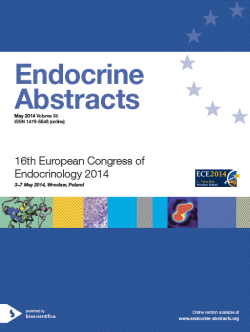Searchable abstracts of presentations at key conferences in endocrinology
Symposia
Molecular pathophysiology for clinicians: receptor-related disorders
ea0035s28.1 | Molecular pathophysiology for clinicians: receptor-related disorders




